Tian Shan's Native Flora
(Click on Thumbnails for high resolution Images. NOTE: Some high res. images may be several MB!)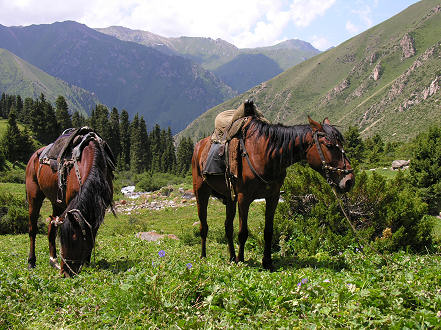
Photo Courtesy: Peter & Kay Forwood
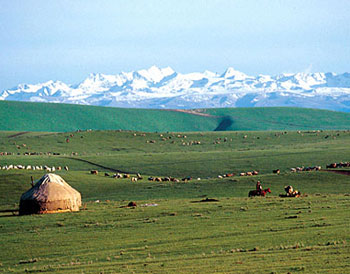
Photo Courtesy: China Daily
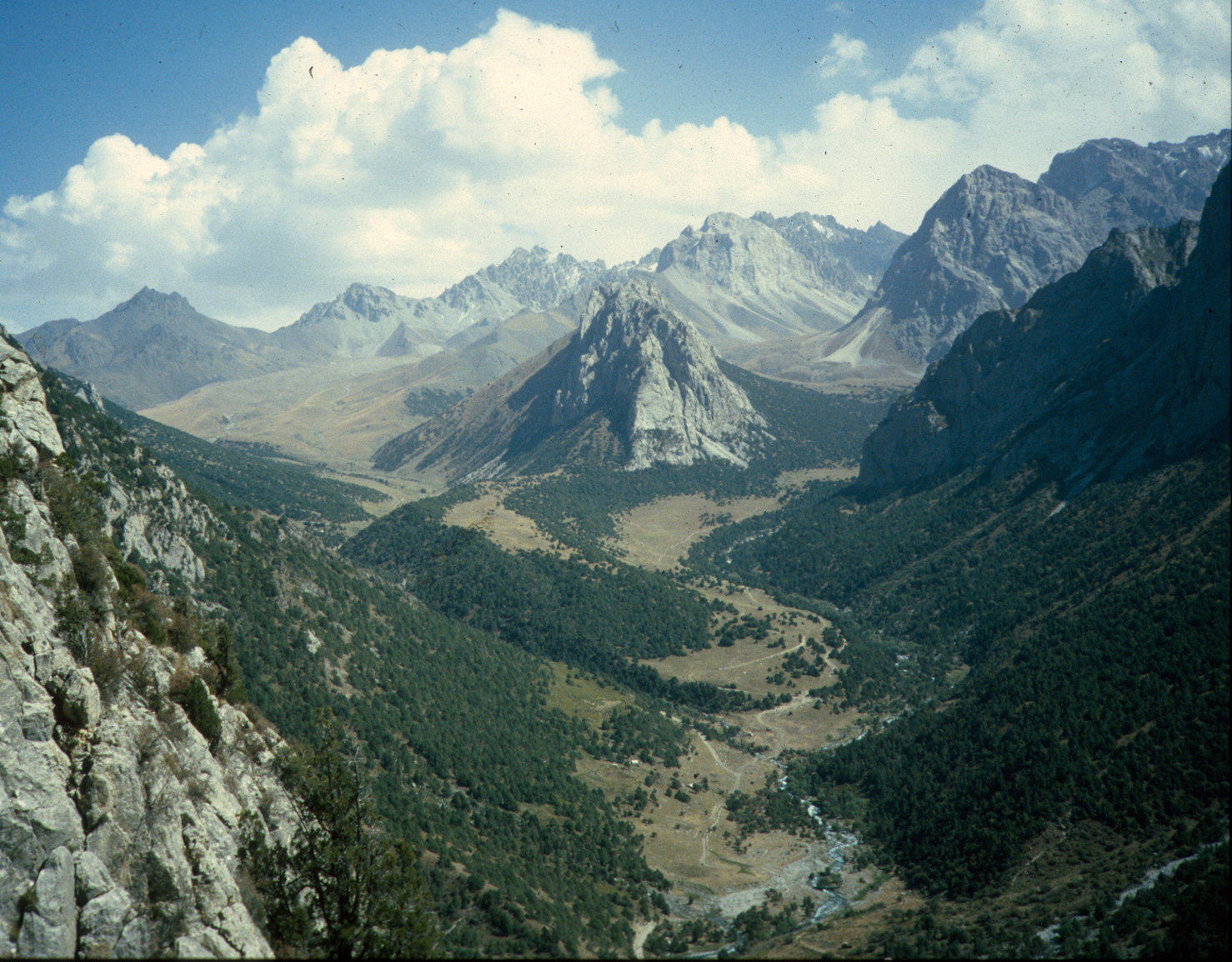
Photo Courtesy: Jan Esper, ETH
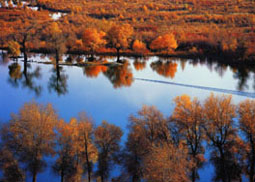
Photo Courtesy: China Pictorial Magazine
Ancient Petrified Forests:
In recent years, vast stretches of "Stone Forests" were found in Musaer and Qitai counties, in eastern Junggar Basin, Xinjiang Uygur Autonomous Region. More information on this can be found on this ChinaCulture.ORG webpage.
Modern Forests:
The characteristics of flora in the Tien Shan are determined largely by the region's distinct zones of elevation, which provide a diverse distribution of soils and vegetation. The predominant vegetation types in the hotspot are desert, semi-desert and steppe on all the lower slopes and foothills and in some of the outlying ranges and major basins. In the foothills and plains at the base of the mountains, semidesert and desert areas have usually developed; these zones continue to altitudes between 5,000 and 6,000 feet in the eastern section. In the Tien Shan they are characterized by ephemeral vegetation growths that die out at the beginning of summer; xerophytic (drought-tolerant) grasses, wormwood, and the desert shrub ephedra are generally distributed. The most common landscape in the Tien Shan is steppe, which occurs at elevations between 3,500 and 11,000 feet. In China and the Central Asian republics measures have been taken to restore vast areas of steppe grassland that have been depleted by overgrazing. The forests of the Tien Shan alternate with steppes and meadows.
Forests are found principally on the northern slopes and range between elevations of 5,000 and 9,800 feet. On the lower slopes of the outer ranges, the forests are mainly deciduous, consisting of maple and aspen, with extensive admixtures of wild fruit trees (apples and apricots). Vast areas of the southwestern slopes of the Fergana Range are occupied by ancient nut-bearing forests. Stands of pistachio, walnut, and juniper are found up to 6,500 feet on the shaded slopes of several western and southern Tien Shan ranges. North and east of the Fergana Valley, coniferous forests predominate. Spruce forests, the only coniferous forest type in the Tien Shan, occur on the moist northern slopes, while open (or sparse) juniper or archa forest occurs widely between 3000 and 9000 feet. The marshy forests in the river valley bottoms, in which aspen, birch, poplar, and various brushwoods ordinarily grow, lie far outside the forest zone. Over millennia, cutting for fuel has reduced much of the tree cover in some areas, although the forced relocation of many mountain inhabitants to irrigated valleys in the second half of the 20th century has reversed this pattern. The forest glades and areas adjacent to the upper tree line are usually covered with meadow vegetation. Subalpine meadows of mixed grasses and cereals extend up to almost 10,000 feet on the moist northern slopes but on southern slopes are usually replaced by mountain steppes. There are short-grass alpine meadows up to 11,500 feet. In the inner and eastern Tien Shan regions, at elevations between 11,200 and 12,000 feet and sometimes higher, the level areas and gentle slopes are “cold deserts,” with sparse and short vegetation. Mosses and lichens are found in the areas of the glacial zone that are free of soil cover.
Forests within Xinjiang Uyghur Province:
All of the natural forest in mountain areas of Xinjiang is state-owned. The total area of land classified for forest use in mountain regions in the province is 1.978 million ha, of which 1.103 million ha is forested land, mainly distributed on the Tianshan and Altai Mountain Ranges, with a small portion on the Kunlun Mountain Range. There are a total of 45 forest centers involved in the management of forest resources in Xinjiang's mountain areas. Of these, 29 are directly administered by the Xinjiang Forestry Bureau (including the nine forest centers belonging to Western Tianshan Forestry Bureau, six belonging to Altai Mountain Forestry Bureau, and 14 located in the middle and east of the Tianshan Mountain Region). Another twelve are directly administered by the prefectures in which they are located; and the remaining four are under military-turned-civilian production corps.
The cost of "development":
Though small in comparison to the rest of Xinjiang, its forest cover hosts many rare species, such as Tamarack, Siberian Fir, and Zizyphus. These forests have degenerated significantly in the last 50 years due to rapid population growth, large-scale reclamation, and severe deforestation. Despite these pressures, significant forests remain, though time is running out for these last, precious stands in this arid region. For instance, the Protection Project of Natural Forests is a huge project that is attracting international attention. However, it has not stopped severe deforestation that has plagued the region, especially along the Ili, Irtys, and Ulungur River Watersheds in the Tianshan and Altai Mountains. The Altai Mountains, in particular, have had their once-dense forests disappear from intensive mining and logging over the last 50 years.
One of the purposes of China's Western Development strategy is to shift the heavy environmental pressures from the coastal regions of Eastern China to the interior West. The environmental impacts that are being moved include an intense usage of water resources, decrease of forest coverage, excessive land use, pollution, and rapid population growth. However, the ecology of Western China, especially in Xinjiang, is extremely vulnerable, and the Western Development strategy has changed and simplified the structure of the landscapes and the biodiversity of the region. The environmental issues are most serious in the Tarim River Watershed. Until a few decades ago, the lower reaches of the Tarim River shifted freely within a width of 50 to 100 kilometers. This created luxurious forests of Natural Populus trees that created a green corridor, which effectively controlled the sand drift coming from the northern margin of the desert. In addition to these forested watershed regions, there are unique oases of trees that dot the Xinjiang desert. The most serious problems to watershed regions have come from the agricultural reclamation that has occurred over the last 50 years. This reclamation has involved turning hundreds of square kilometers of desert into fertile farmland. This has come at a great cost to the forests and the grasslands along the banks of the Aksu River, which are now seriously destroyed. The second most serious problem is the construction of large-scale water storage projects. There are now three large reservoirs that do not even appear on regional maps. These reservoirs have all been created since 1995. They were built with short-term economic growth in mind, and little attention was paid to the impact the projects would have on the ecological balance of the Tarim River watershed, as well as its ground water level in the region. In addition, there are future plans for trunk canals, sluice gates, and reservoirs in the lower reaches of the Tarim River that will replace the natural river channel. If this scheme moves forward, the Green Corridor will soon disappear. The need for economic development must be brought into balance with the needs to sustain the watershed.
References:
Biodiversity Hotspot: Mountains of Central Asia (Conservation International)Encyclopedia Britannica
Xinjiang: An Explorer's Paradise Faces New Pressures
Case Study on the Natural Forest Protection Program at XUAR's Western Tianshan Forestry Bureau
Tian Shan's Birds
(Click on Thumbnails for high resolution Images. NOTE: Some high res. images may be several MB!)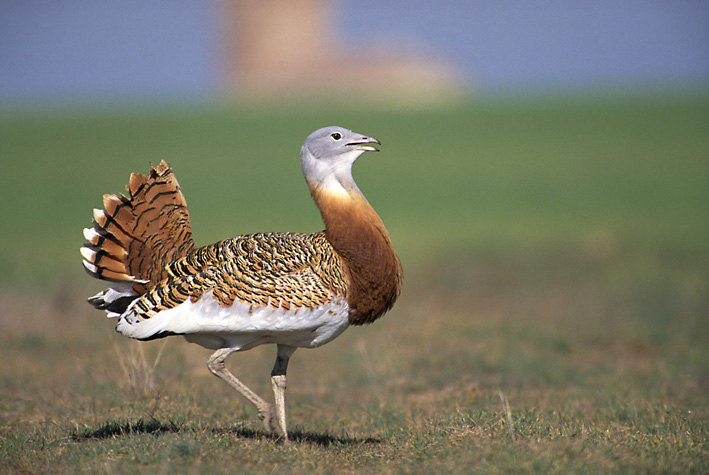
Photo Courtesy: Cambridge University

Photo Courtesy: Bird Digiscoping

Photo Courtesy: Scott Squires

Photo Courtesy: Birdlife.ORG
Birds:
Although nearly 500 bird species occur regularly in this hotspot, none are endemic to the region. Many species belong to genera typical of the high ranges of Asia, such as redstarts, accentors and rosefinches. Coniferous forests on the northern side of the Tien Shan form the southern limits of several boreal species, including the black grouse and northern hawk owl, while desert birds, including the great bustard and houbara bustard occur in the low-altitude zones.
The Mountains of Central Asia are an important stronghold for birds of prey, with important breeding populations of several species, including the golden eagle, imperial eagle, steppe eagle, booted eagle, lammergeier, black vulture, Eurasian griffon, Himalayan griffon, peregrine falcon and saker falcon.
References:
Biodiversity Hotspots - Conservation InternationalOriental Bird Images
Ornigthology Links & Ecotours
Wildlife Conservation Society
Tian Shan's Native Fauna
(Click on Thumbnails for high resolution Images. NOTE: Some high res. images may be several MB!)
Photo Courtesy: David Hick
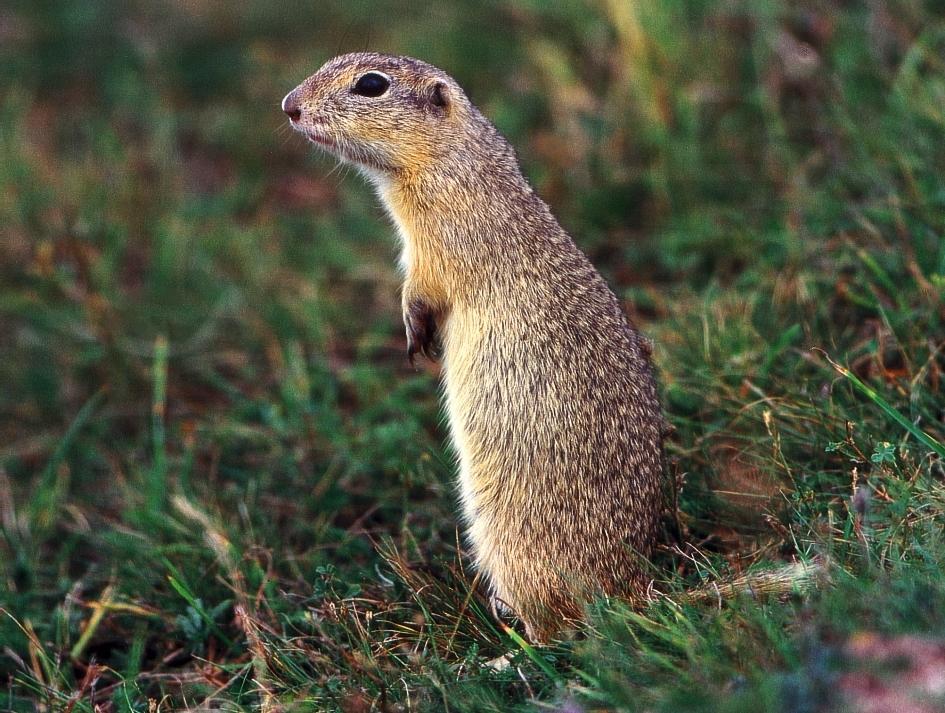
Photo Courtesy: Adrian Hilton

Photo Courtesy: Wildlife of Pakistan
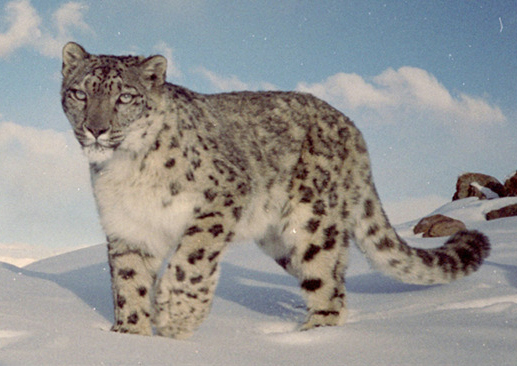
Photo Courtesy: IndianJungles.COM
Mammals:
Six of the 140-odd mammals found in the Tien Shans are endemic: Menzibier’s marmot, found only in the western Tien Shan above 2,000 meters, and Ili pika, a small species of lagomorph found only in the Chinese portion of the Tien Shan; two susliks or ground squirrels; the Pamir shrew; and the Alai mole vole, which is known only from the Alai Mountains in southern Kyrgyzstan.
The Tien Shans also hold a variety of mountain ungulates, including three endemic subspecies of the argali wild sheep, among them the Marco Polo sheep, whose magnificent curling horns have made it a favored target of trophy hunters. The Siberian ibex is the most numerous and most widespread species, occurring in all parts of the area above the treeline, while the blue sheep, a typical Tibetan and Trans-Himalayan species, reaches the southeast corner of these mountains. The Saiga antelope, a species associated with the flat plains of central Asia, inhabits the lower elevations of the Tien Shans. The antelope has experienced a dramatic decline since the 1970s due to habitat destruction and hunting.
Because of their location in the central part of the Asian continent, the Mountains of Central Asia play an important connecting role in the distribution of many important Asian montane species. Perhaps the best-known symbol of this fauna is the snow leopard, a species found in the alpine and subalpine zones of the hotspot. The species has declined here, as elsewhere, as a result of poaching for its valued fur and a depletion of its prey base through illegal hunting.
Reptiles:
Nearly 60 reptiles are found in the Tien Shans, though only one is endemic (a skink). Diversity is highest in the lower altitudes, in desert and semi-desert areas. There are ten species of Eremias lizards and eight toad-headed agamas.
Amphibians:
Although only seven species of amphibians have been recorded, four of them are endemic, including a salamander found only in the Dzhungarian Alatau Range at the northern end of the Tien Shan. One recently described frog species is known only from southern Tajikistan, though they may also occur in adjacent parts of Afghanistan.
Freshwater Fishes:
The arid Tien Shans have less than 30 freshwater fish species, five of which are endemic. Endemism is centered in the Lake Issyk-Kul Basin of Kyrgyzstan, which lacks outlets to connect it with any other bodies of water. In addition, the Kugitang blind cave fish is found only in a small area of the Kugitang Mountains at the southwestern end of the mountains.
Invertebrates:
Although a full inventory of invertebrates for the hotspot is lacking, there is a rich insect diversity in the alpine meadows. Eleven of 26 species of apollo butterflies known to occur in this hotspot are endemic. There are also 87 endemic mollusks, including the Kokand freshwater clam, which is restricted to one lake in the Fergana Valley.
References:
Biodiversity Hotspots - Conservation InternationalWildlife Conservation Society
Green Tours
Please e-mail Ravi Kanda if you have any suggestions, comments or corrections.